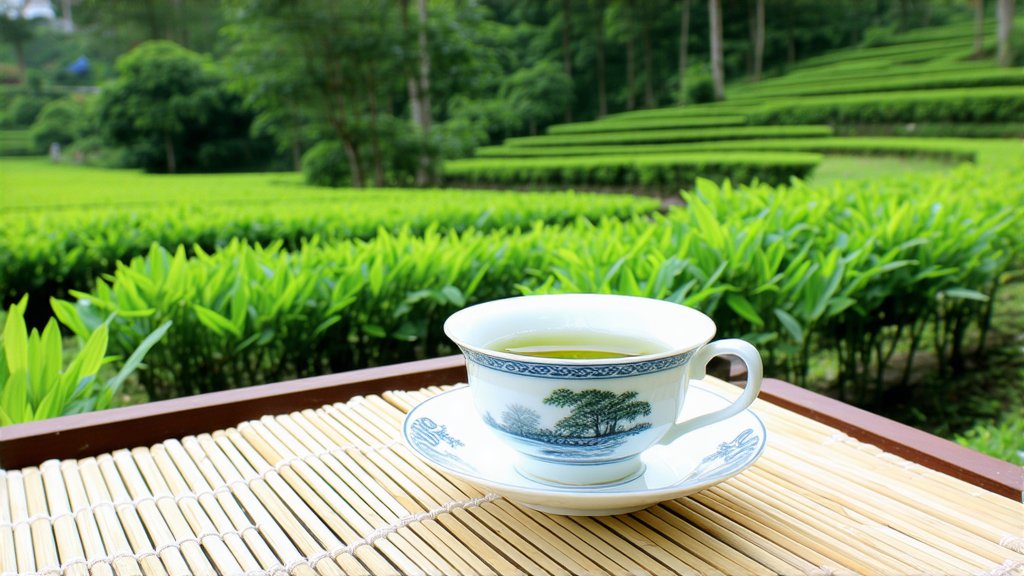
In the lush landscapes that cradle the West Lake in Hangzhou, China, there lies a treasure trove of history and tradition encapsulated in the form of a delicate leaf. This is Longjing, or Dragon Well, one of China's most celebrated green teas, revered not just for its exquisite flavor but also for the rich heritage it embodies. As we embark on this journey through the verdant fields and meticulous processes that give life to Longjing, we unravel a story that spans centuries, intertwining nature's bounty with human artistry.
Historical Roots: A Legacy Brewed in Time
Longjing tea traces its origins back to the Tang Dynasty (618-907 AD), though it was during the Qing Dynasty (1644-1912) that it gained imperial favor and prominence. Its name, 'Dragon Well,' is derived from a legendary well near the West Lake, said to be home to dragons, symbolizing prosperity and good fortune. Emperor Kangxi's endorsement in the 18th century cemented its status as the "Gran Tea" of China, reserved exclusively for the imperial court. Over time, Longjing evolved from a symbol of royal indulgence to a cherished beverage enjoyed worldwide, embodying the essence of Chinese tea culture.
Varieties: A Symphony of Flavors
Within the broad category of Longjing, several sub-varieties exist, each with its unique characteristics influenced by microclimates, soil composition, and cultivation practices. The most renowned among them is Xihu Longjing, grown in the hills surrounding the West Lake. Its leaves are flat and smooth, resembling the shape of a spearhead, and exhibit a vibrant jade hue when brewed. Other notable varieties include Meijiawu Longjing, known for its slightly fuller body and chestnut undertones, and Yunnan Longjing, which boasts a more robust character due to the province's diverse terroir.
The Art of Cultivation: From Seed to Cup
The cultivation of Longjing tea is an art form in itself, deeply rooted in traditional Chinese agriculture. Seeds are sown in the spring, and young seedlings are carefully transplanted into terraced fields. Pruning techniques play a crucial role in shaping the tea bushes and enhancing sunlight penetration, vital for the development of complex flavors. Harvest season typically falls in early spring (pre-Qingming Festival) when the first buds and leaves are handpicked with precision, ensuring only the finest parts of the plant are used.
Crafting Perfection: The Manufacturing Process
The magic of Longjing tea lies in its meticulous production process, which involves several stages designed to preserve its natural freshness and aroma. After picking, the leaves undergo pan-firing, where they are stir-fried in large woks over high heat to halt oxidation. This step not only fixes the green color but also develops the distinctive nutty aroma associated with Longjing. Following this, the leaves are rolled and shaped by skilled artisans who use their hands to flatten and straighten each leaf, a process known as "fixing." Finally, the tea is dried to remove any remaining moisture, ensuring longevity without compromising flavor.
A Symphony of Senses: Tasting Longjing
To truly appreciate Longjing tea, one must engage all senses in the tasting experience. Begin by observing the dry leaves, noting their uniform shape and vibrant green color. As hot water (around 80°C) is poured over them, watch the leaves unfurl gracefully, releasing a fragrant mist. The initial infusion yields a light yellow-green liquor with a subtle sweetness and a hint of vegetal freshness. Subsequent infusions reveal deeper layers of flavor, from a creamy texture to a lingering aftertaste that evokes the essence of springtime.
To fully savor Longjing, it's recommended to use a clear glass or porcelain gaiwan, allowing the drinker to witness the dance of the leaves and appreciate the changing hues of the brew. Each sip should be taken slowly, allowing the tea to coat the palate and interact with the taste buds before swallowing, thereby capturing the full spectrum of its nuanced flavors.
Conclusion: A Timeless Elixir
Longjing tea is more than just a beverage; it is a testament to China's enduring tea culture and a bridge connecting past traditions with present enjoyment. Its journey from seed to cup encapsulates centuries of wisdom, dedication, and an unwavering commitment to quality. As you raise your cup of steaming Longjing, whether nestled amidst the tranquility of West Lake or in the comfort of your own home, remember that you are partaking in a ritual that has delighted emperors and commoners alike for generations. With every sip, you partake in a legacy that transcends borders, uniting us all in our shared appreciation for this timeless elixir.